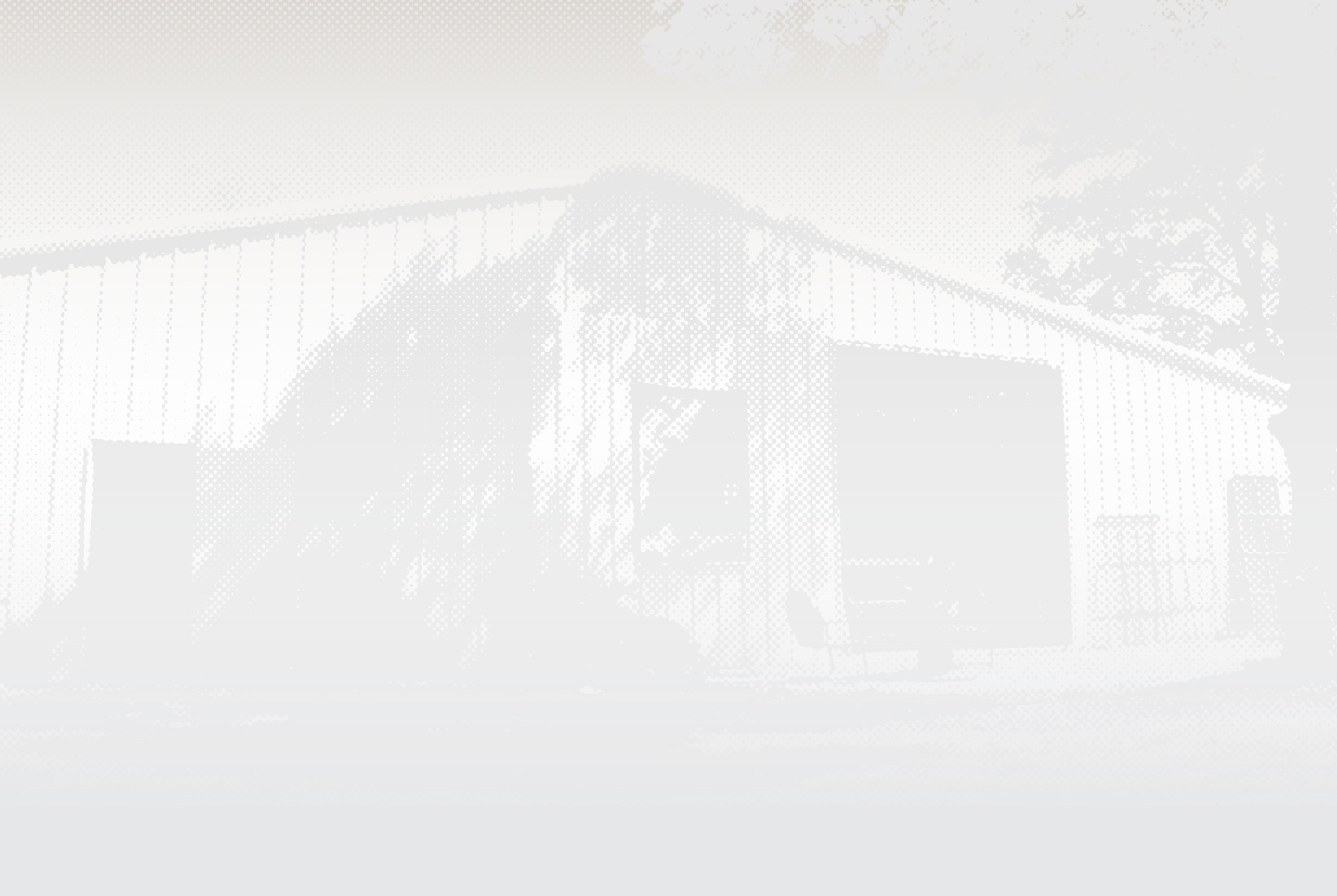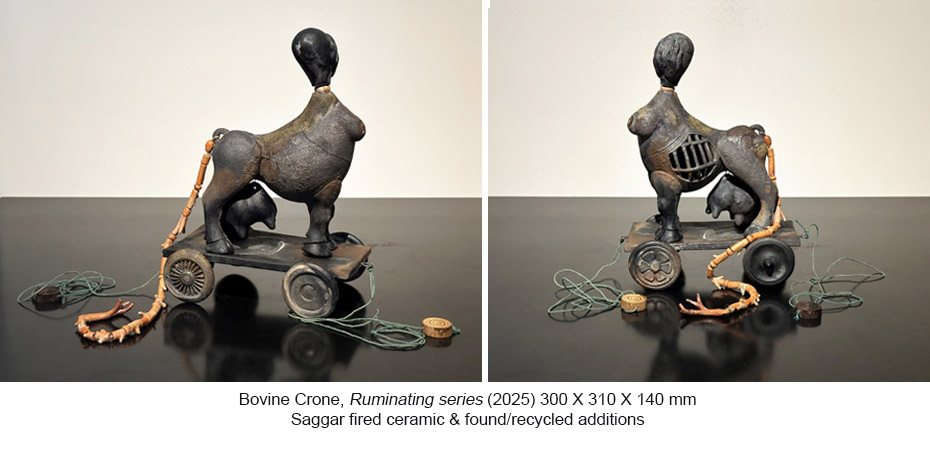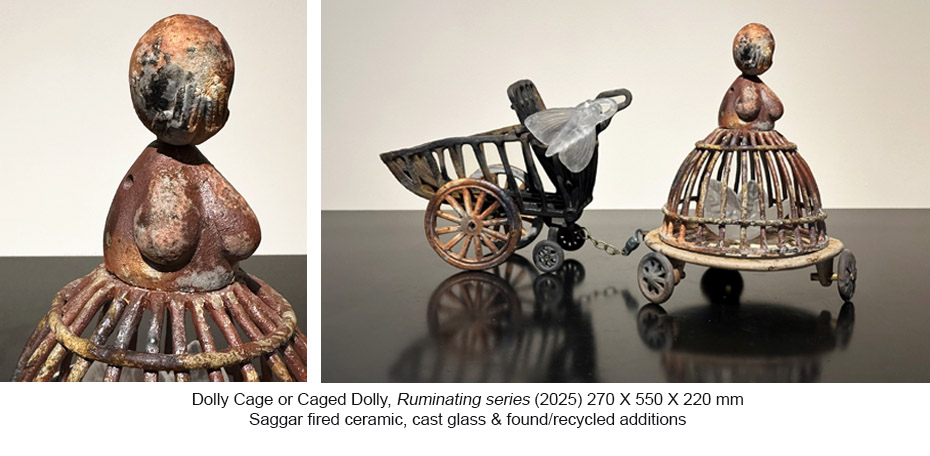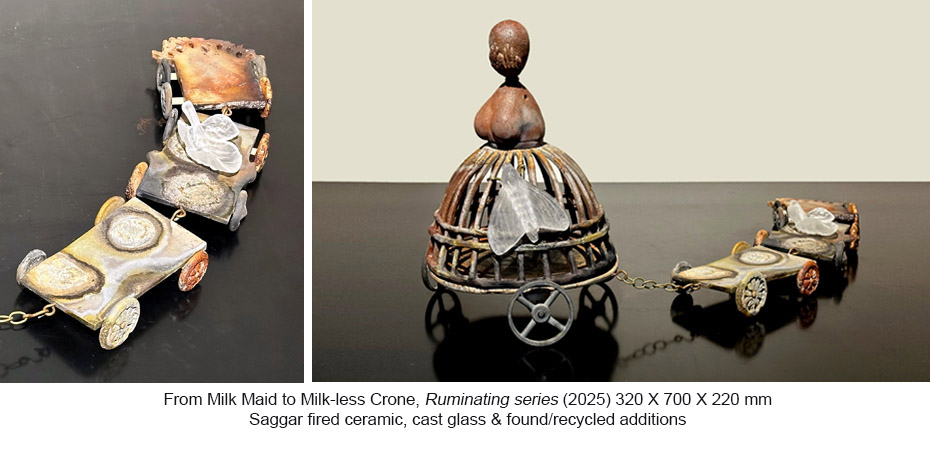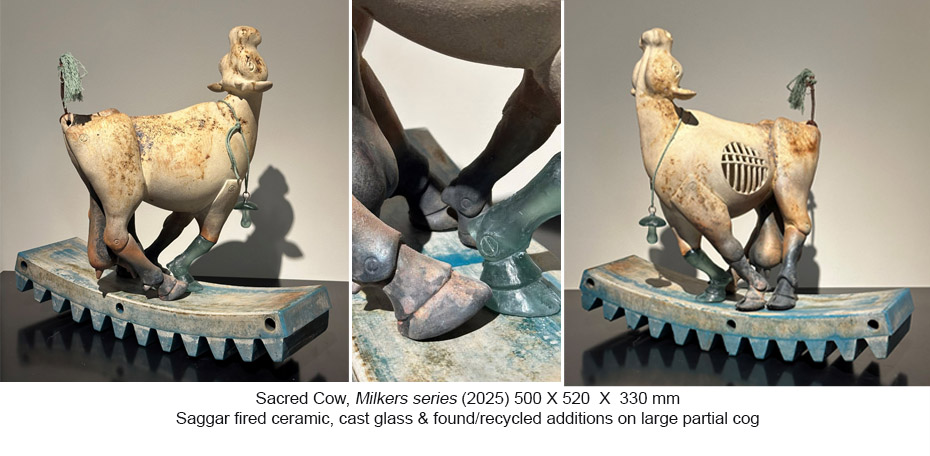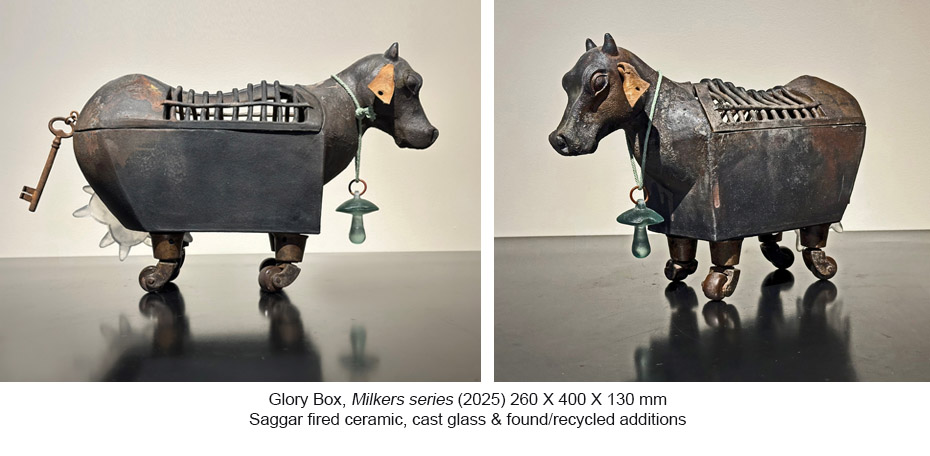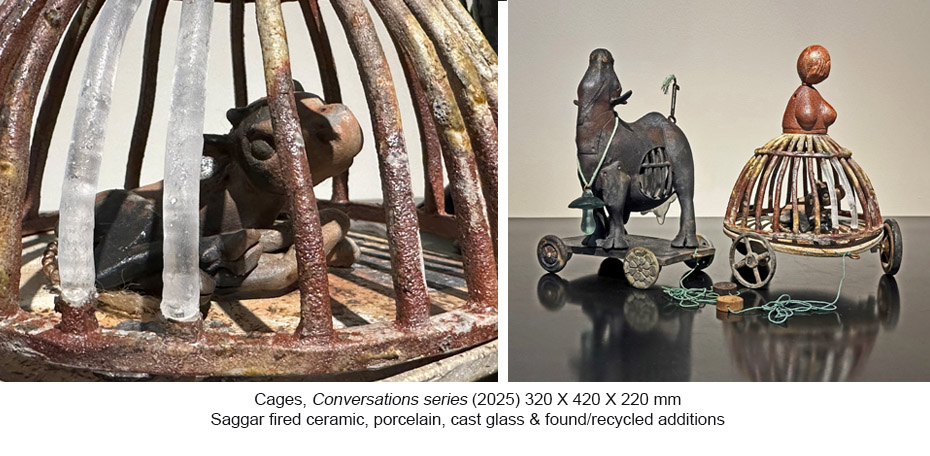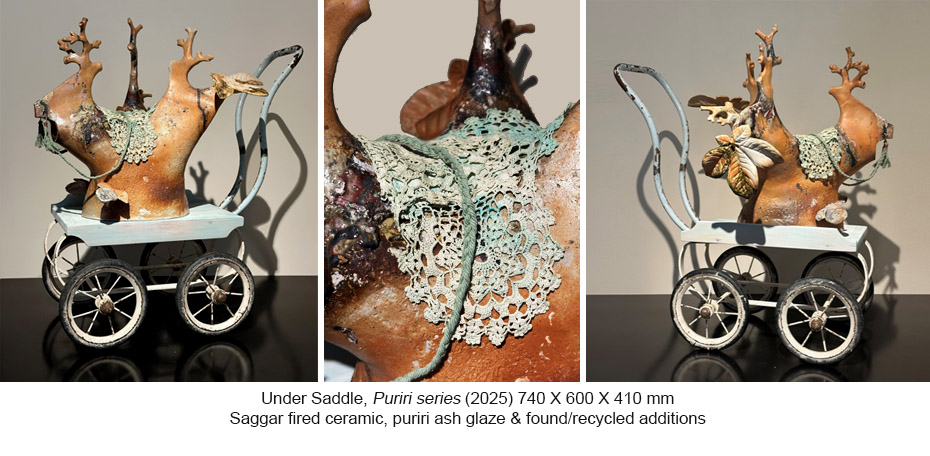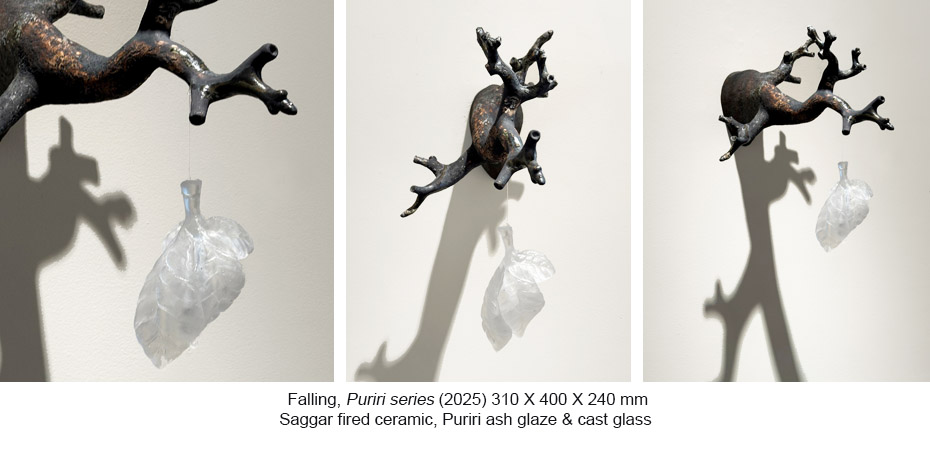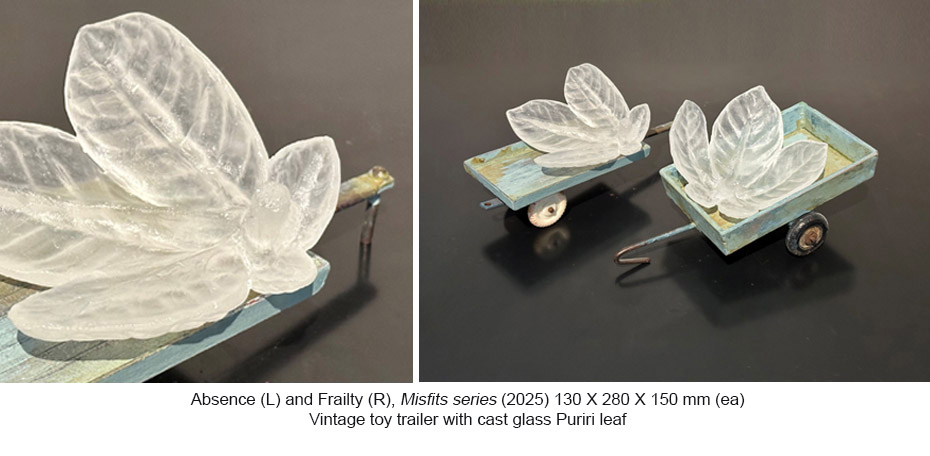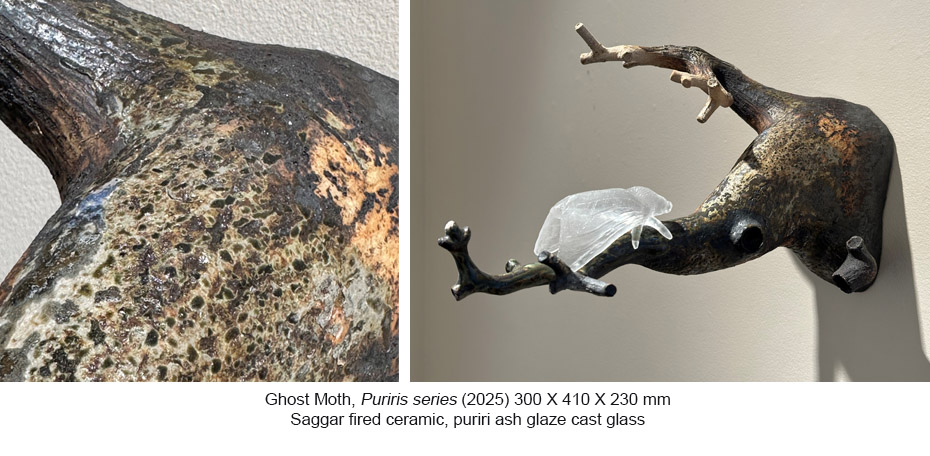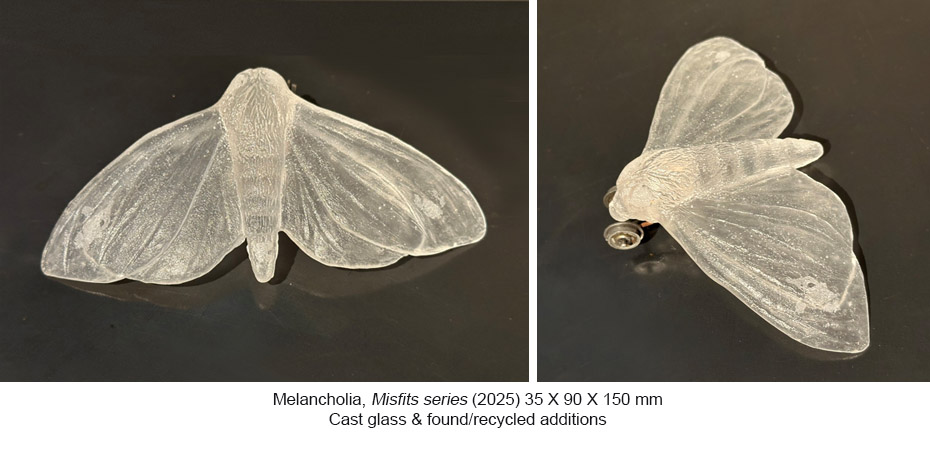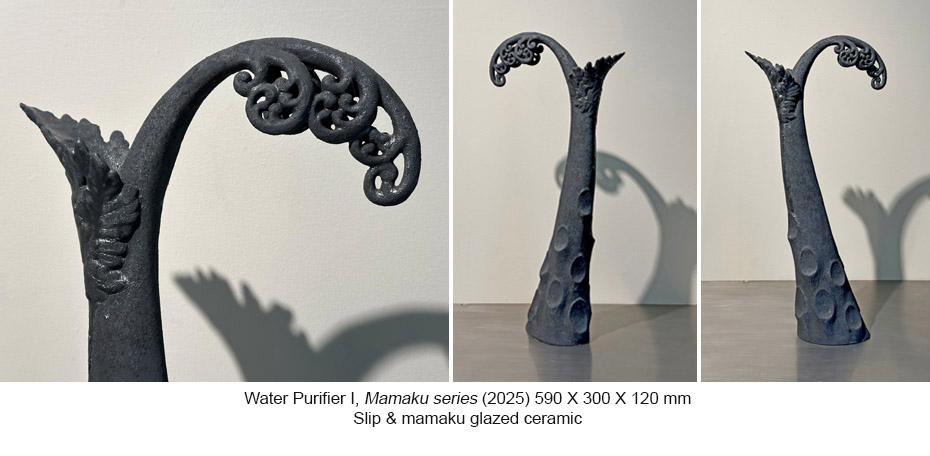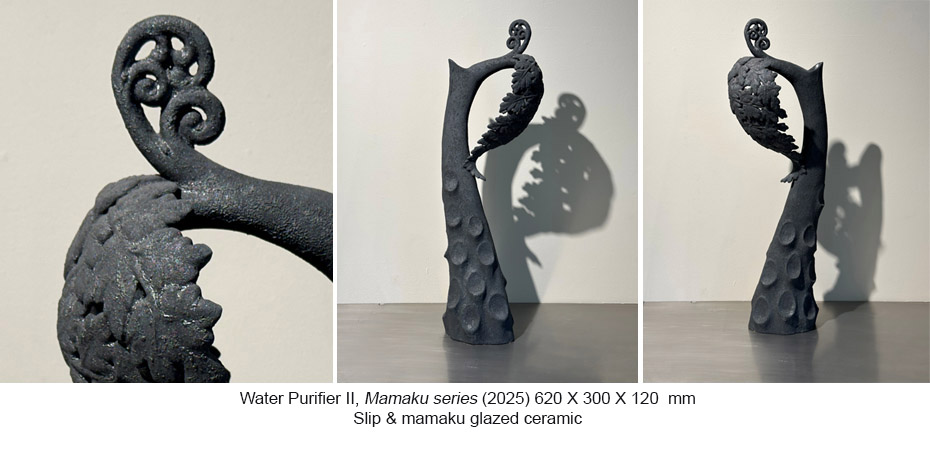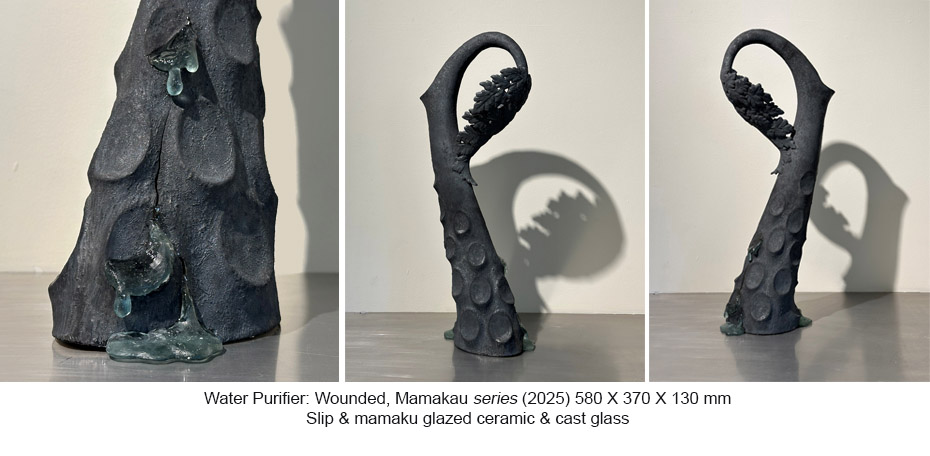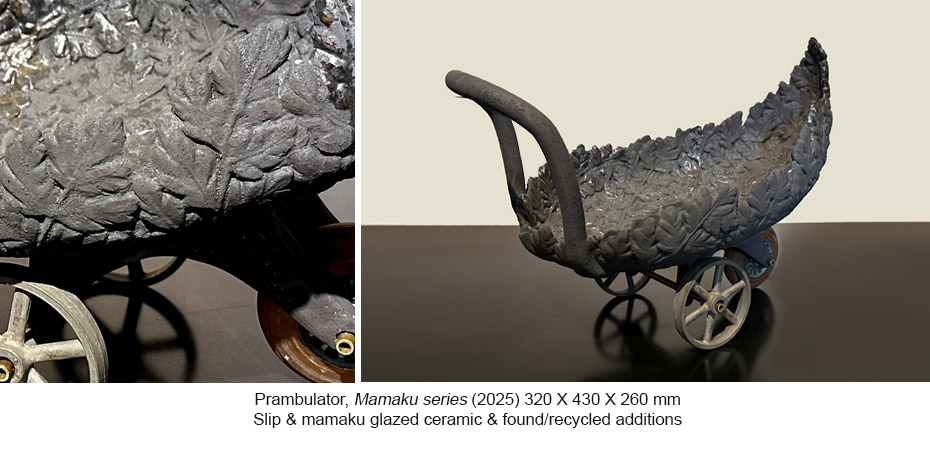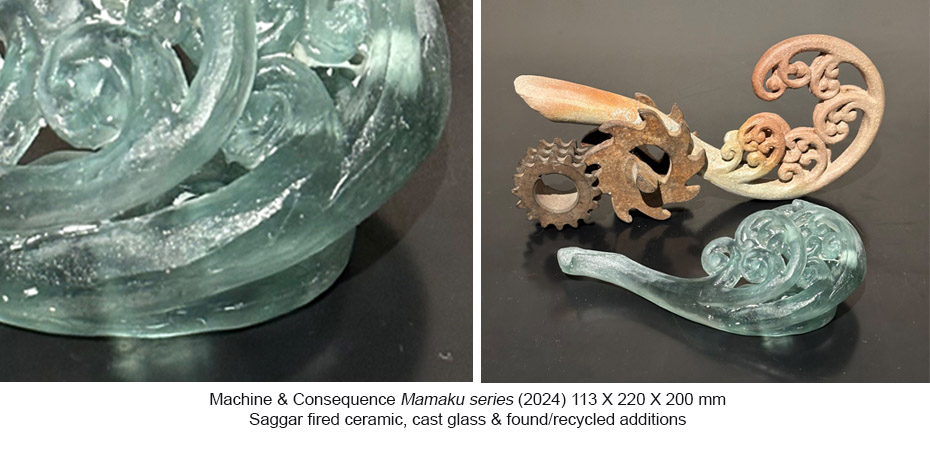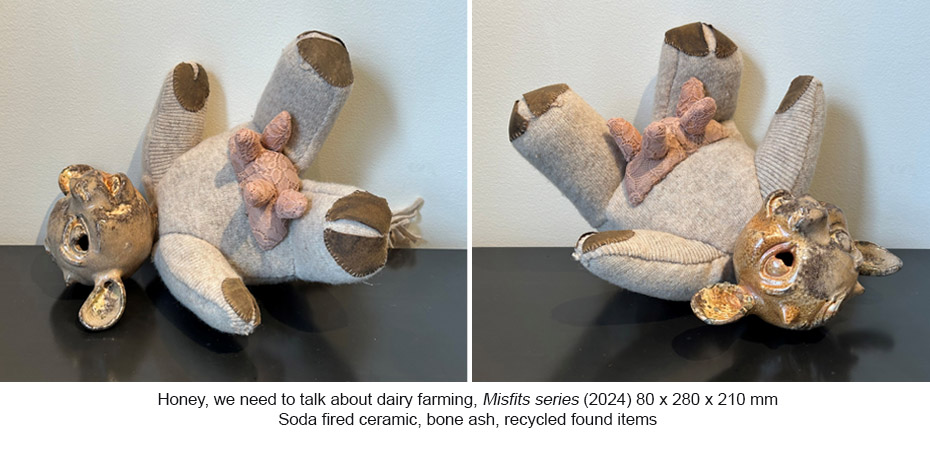Saggar fired ceramic, and cast glass creations, inspired by toys, addressing dairy farming practices.
Born in Te Aroha in 1967, Bronwyn Gayle earned a Diploma of Craft Design from Christchurch Polytechnic in 1994. Moving to Dunedin in 1995, she studied at the Otago Polytechnic School of Art earning a Diploma in Ceramic Design (1995), a Post Graduate Diploma of Visual Arts (2019) and a Master of Fine Arts, with distinction (2022).
“As I age I am drawn to ruminate on the dairy farming environment in which I was raised, and contemplate present farming practices and their consequences. Our history of rural legend and search for identity needs re-imagining in this time of environmental crisis. My mediums, methods, firing practices and design decisions all reflect these concerns.”
Most of the ceramic pieces in this exhibition were fired in saggar pots filled with cow dung, wrapped in waste hay held in place by fencing wire and sprinkled with ash from native trees. The clay saggars were formed from recycled clay slip and a mix of out-dated dairy farming magazines and old 1970s New Zealand Nature Heritage magazines. The reaction between the sculptural pieces and the combustibles within the saggar process is unpredictable and volatile. The black Mamaku works were painted with black slip and ash glazes made from Puriri trimmings and fallen Mamaku branches (from my garden) and fired between the saggar boxes. These ash glazes celebrate the specific trees that inspired the clay works.
My contemplative clay pieces, wrapped in carefully considered combustibles and fired within pages from pertinent environmental and farming magazines, have become vessels of sympathetic magic. In doing so they not only chronicle their firing history through their surface marks but encapsulate the laws of similarity and contagion, which are the essence of sympathetic magic. Uncovering the pieces after the saggar process feels like an archaeological discovery. Carefully extracting the clay pieces from their saggar confines, involves careful decisions over which scars are to be celebrated and which are to be smoothed over.
Glass is common – it is in all of our homes, it is mundane, intended not to be seen but to be seen through. In contrast the glass in this series of works speaks for the unseen and despite the human desire not to see. These cast glass pieces look light but feel heavy. I believe this mirrors the emotional weight of environmental crisis in Aotearoa. These pieces are a mix of polished surfaces and crudely finished exterior, reflecting the process of their making. The intent of casting glass is to capture it in its molten form. It’s akin to setting a glass trap and patiently waiting to see what it is you have captured. When the glass is released from its cage, it reflects the shape of its prison. These glass pieces represent ephemeral moments caught in time.
Creating clay & glass toy-like sculptures is my way of facing difficult truths and imagining optimistic futures. By creating these toy inspired objects in clay I become part of a ceramic tradition which reaches back millennia. Toys invite daydream and speculation and so create a fissure in our mundane world. They provide a conduit in which to talk about challenging issues and imagine positive futures. My “never seeing dollies” and their “bovine cohorts” stand frozen within the conflict between contemporary dairy farming practices and our current environmental emergency.
